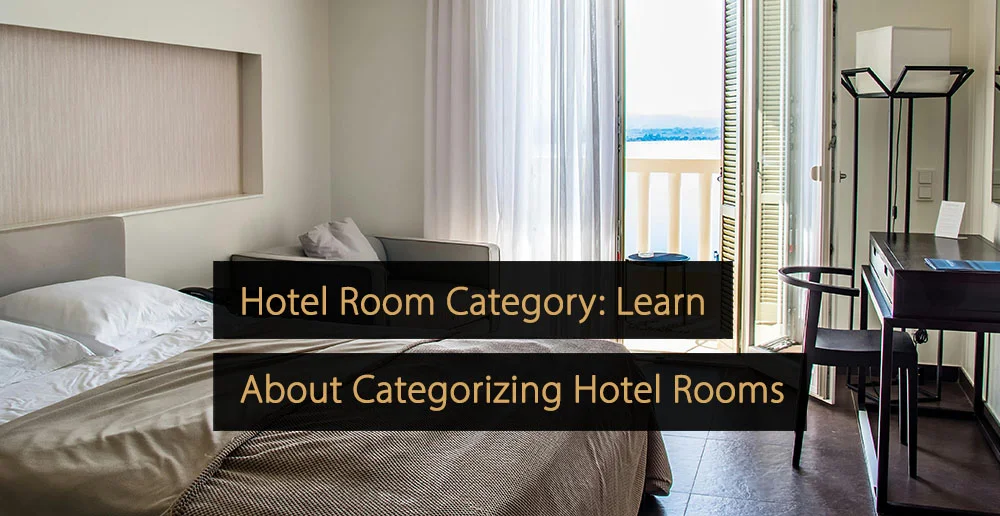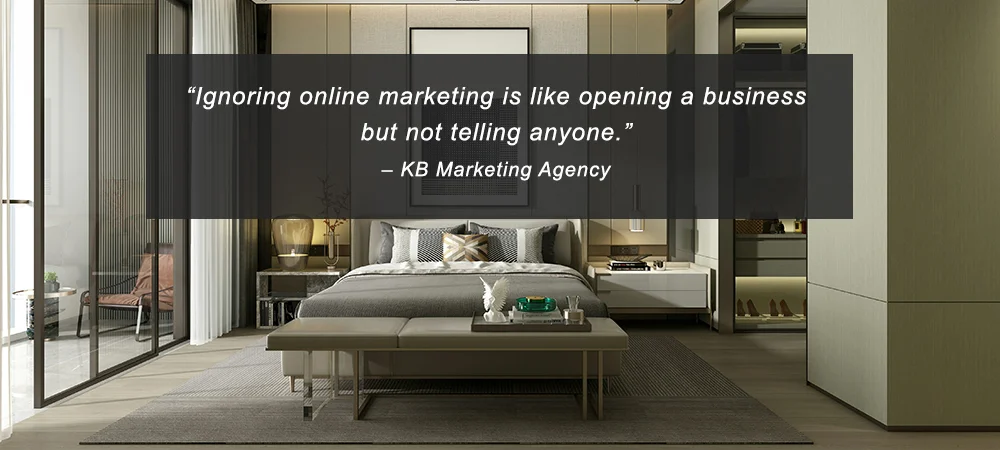Table of Contents:
- What Is the Hotel Industry?
- What Is a Hotel Room Category?
- Why Are There Different Hotel Rooms Categories?
- Categories Can Increase Room Revenue
- Common Hotel Rooms Category Types
- Tips for Creating Hotel Room Categories
- Integrating Hotel Room Category Options and Housekeeping
- Marketing Segmentation, Hotel Room Category Definitions, and New Strategies
What Is the Hotel Industry?
The hotel industry is huge and multifaceted with examples ranging from luxury hotels to motels, and even spas. However, every part of the industry seeks to meet the needs of guests who need overnight stays. Hotels are themselves related to the hospitality industry as a whole. As you might suspect, this means you’ll often see considerable overlap between the two. For example, it’s quite common for hotels to have bars, restaurants, gyms, hot tubs, pools, and more.
What defines a hotel is largely the duration of stay. The duration will be shorter than you’d see in an apartment. However, there’s an expectation that guests will at least stay overnight. The industry is one of the reasons why modern travel is so enjoyable, and this is reflected in its worldwide popularity. You’ll find hotels everywhere a trip might take you. And hotels are worldwide job providers.
Video: The Hotel Industry
What Is a Hotel Room Category?
A hotel room category is a short description that provides a large amount of information about a room. Categorization can turn a complex and detailed list of information about rooms into something layman-friendly. The categories also make things easier for hotel management as they can easily modify price points beyond individual rooms. The categories are typically created around beds, architecture, furnishings, and amenities. This does lead to some fuzziness. For example, a “single” might actually have twin beds. And no matter what the room size there are always going to be some occupancy restrictions.
Why Are There Different Hotel Rooms Categories?
Of course, there are many different reasons for the definition of hotel room category. However, the following are the most important and easily recognized.
Categories Can Increase Room Revenue
Room revenue is largely determined by a combination of guest expectations and available options. Room revenue can be increased by advertising what guests can enjoy. This aspect of hotel room category creation is an important way to increase purchasing options. Guests can have access to options that fit their intent. Someone on a strict budget won’t be tempted by luxury purchases but someone in a luxurious suite might decide to.
It Allows for Increased Occupancy per Room
Increasing occupancy means that guests understand just how many people can share a room. It can help families find the perfect accommodation for every member. This is important as people are often unaware of options such as interconnected rooms or multi-bed layouts. Larger groups can be an efficient business practice. Hotel room category options or hotel room types leverage flexibility to optimize the utilization of the hotel’s available space.
They Provide Upselling Opportunities
Upselling opportunities are the opportunities a hotel has to turn a single sale into multiple sales. This also includes upgrades to a guest’s chosen package. The hotel (industry) leverages upselling as a fundamental part of the business plan. Hotel room categories are one of the best platforms for hospitality upselling. Hotel operations can make it clear what hotel room category options are a good fit. Guests and hotels both benefit.
Brand Differentiation From Categorization
Brand differentiation refers to elements that guests use to judge a hotel against the competition. A hotel room category can be uniquely branded for recognition. Marketing plays a big part in hotel trends, whether it’s standard or organic marketing. Creating distinct elements helps to make a hotel brand stand out. A hotel room category provides guests with an experience tailored to their needs. The guests also have a convenient conversational lexicon.
Common Hotel Rooms Category Types
Hotels have unlimited options for category definitions. However, the following hotel room category conventions are the most popular.
Video: Types of Hotel Room Categories
Hotel Room Category Based on Occupancy
A hotel room category based on occupancy refers to the amount of people expected to stay within. However, it’s not synonymous with a bed count. Its significance comes from acting as a simple guide to match guests to accommodations. For example, two people would ideally want the ‘double’ room category. There are still some complexities. For example, a triple room might have three twin beds, two double beds, or a double and twin bed. Or a double room might have two twin beds and one double. It’s always best to clarify before making reservations.
Hotel Room Category Based on Layout
Layout essentially refers to the room’s size, adjoining rooms, and additional areas like kitchens. It’s also an easy way to intuit accessibility for the handicapped. Hospitality management can inform guests about everything from price points to accessibility simply with this category listing. It has significance for matching guests to service. Standard rooms typically aim for the average couple or individual with a double bed. Deluxe is larger and fit for families. Likewise, suites are more luxurious and have options that differ significantly by hotel. These can range from basic suites to luxurious presidential suites.
Hotel Room Category Based on Bed Type
A hotel room category based on bed type puts priority on the size or number of beds. However, occupancy limitations are still an important concern. It’s one of the more significant categories due to the ease with which people can match room to requirement. You know the exact bed type. The sizes also scale. For example, a double double has two double or queen beds. Thus two to four guests could use them. However, again, occupancy limits ultimately cap the number of guests who can stay in an individual room within the hotel.
Hotel Room Category Based on Service or Amenities
A hotel room category defined by services is inherently unique. They’re essentially perks offered by a hotel, such as access to lounges or regular events. They often tie into a hotel star rating system with premium amenities for top-tier guests. They’re an important way to highlight specific elements within hotels. The range of options varies. On one end are afternoon wine hours or breakfasts. On the other hand, you might see categories that offer penthouse suites that reserve an entire top floor filled with amenities. Extra space and privacy are popular options.
Tips for Creating Hotel Room Categories
Categorization can be complex. However, a few points can make it easy to create the perfect hotel room category listings.
- Define Clear Distinctions: The hotel room category needs to create and explain unique features and avoid copying features from other options.
- Standardize Naming Conventions: Names need to be distinct both to explain options and allow for effective marketing.
- Offer a Range of Options: Offer choices to match needs, ranging from lower budgets to luxury suites.
- Highlight Unique Features: To enhance marketing, the categories should stress what makes each category unique. Some examples include size, services, and beautiful views.
- Train Staff: Educate staff on the categories, both definitions, and benefits, so they can help guests while also upselling the options.
Integrating Hotel Room Category Options and Housekeeping
Services and room layout are important elements of hotel room category definitions. This overlaps with various hotel departments, but housekeeping is one of the more significant examples. People often underestimate the role of housekeeping in a guest’s enjoyment of his stay. However, consistent and dependable service is itself a valuable feature for any room. Housekeeping can even be one of the more high-tech examples of the available services through software. You can find out more about housekeeping options in the article “Hotel Room Cleaning Tips for Meeting & Exceeding Guests’ Expectations.”
Marketing Segmentation, Hotel Room Category Definitions, and New Strategies
Market segmentation is one of the more important concepts for hotel marketing. Hotel room category options are often an effective tool to use within it. Segmentation is focused on the idea of marketing to different segments of populations with specialized messaging. Hotel categories are a way to group options into packages. Likewise, staff like a hotel concierge can use this information to help guide people to the best option or package. You can find out more about effective marketing strategy in the article “Hotel Market Segmentation: Effective Tips & Strategies for Hoteliers.”
A hotel room category is as important as any hotel technology or marketing strategy. The next step is to consider how to use them together to take your plans to the next level.
Did You Like This Article About Hotel Room Category?
You might also be interested in the following articles:
- Hotel Breakfast: Types, Overview & Tips to Impress Your Guests
- Hotel Designs: Inspirations for Hoteliers for New Design Hotels
- Hotel Organizational Structure: A Full Guide to Hotel Organization
- Hotel Marketing Plan: Tips & Tricks for Successful Hotel Marketing
- Hotel Asset Management: Definition, Importance, and Practices
- How Long Can a Guest Stay at a Hotel? Stay Lengths Explained
More Tips to Grow Your Business
Revfine.com is the leading knowledge platform for the hospitality and travel industry. Professionals use our insights, strategies, and actionable tips to get inspired, optimize revenue, innovate processes, and improve customer experience.Explore expert advice on management, marketing, revenue management, operations, software, and technology in our dedicated Hotel, Hospitality, and Travel & Tourism categories.









Leave A Comment